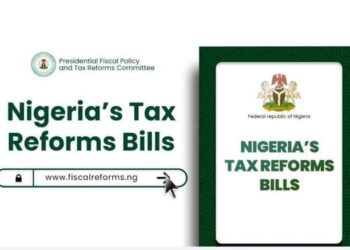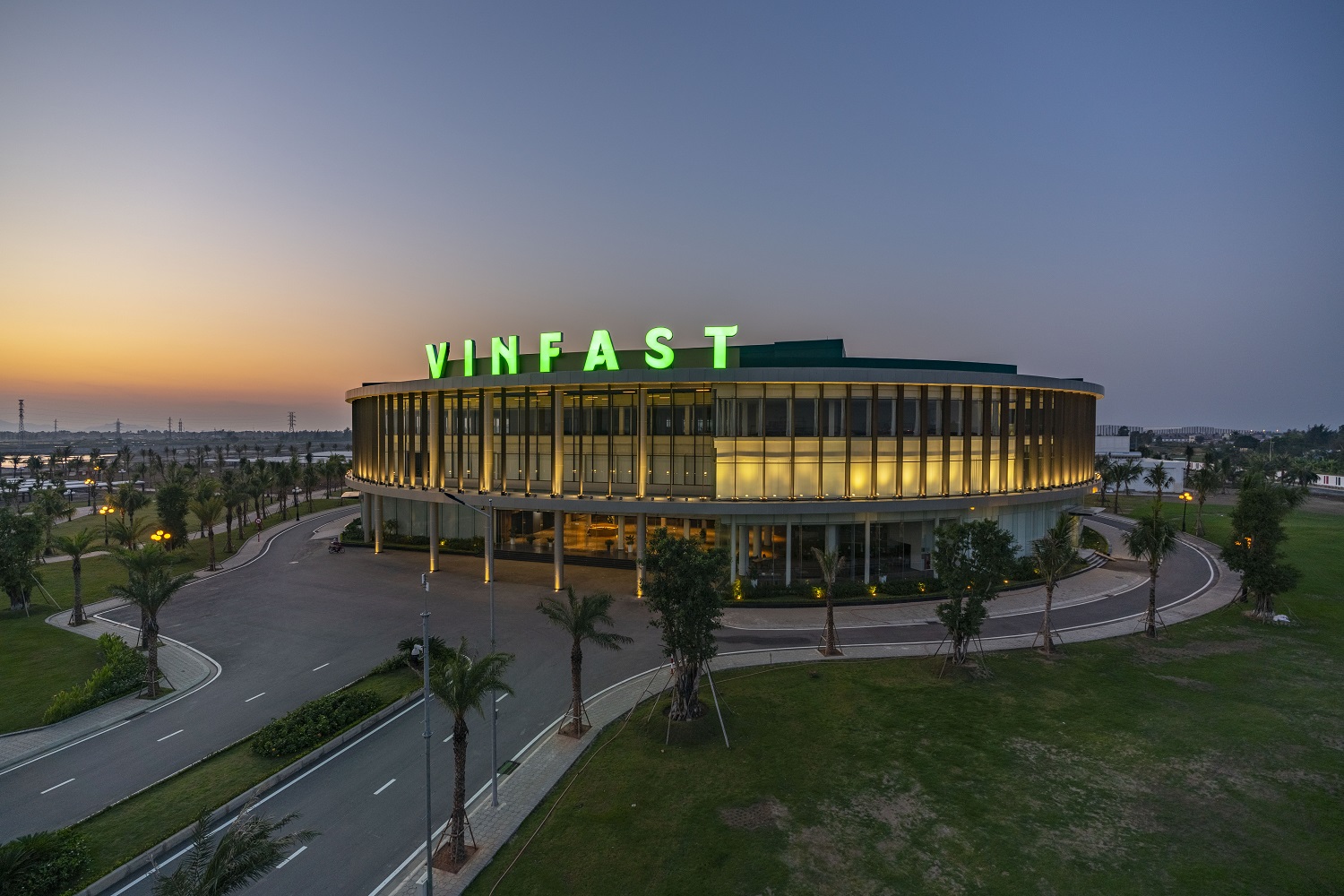
Oluwemimo Joseph Osanipin is the new Director General of the National Automotive Design and Development Council (NADDC). Until his appointment last year, he was the Chief Operating Officer of the indigenous electric vehicle maker, JET Motor Company. Osanipin began his career as a senior internal auditor at Ibru Organisation from 1996 to 2000, where he developed his internal audit skills. In 2000, he joined Zenith Bank, rising through roles such as IT Auditor and Internal Control and Audit, significantly enhancing the bank’s audit functions over 12 years. In 2013, he joined the GIG Group, serving as Head of Internal Control and Audit and later as Group Head of Finance and Accounts, contributing to the group’s success until 2019. He then became the CFO/Head of Strategy and Projects at Jet System Auto Industries Ltd., overseeing financial aspects and strategic projects for JET Motor Company Electric Vehicles. Osanipin equally boasts an impressive educational and professional background. In this exclusive interview with BusinessDay, Osanipin speaks to John Osadolor, Onyinye Nwachukwu, and Favour Okpale about the government’s ongoing efforts to boost local manufacturing of vehicle components and enhance the overall growth of the country’s automotive sector.
“Yes, there is a market in Nigeria; the economy in Nigeria supports the manufacturing of vehicles, but we are not going to be able to drive in needed investments with just policy.”
What is your strategic plan to drive growth in Nigeria’s automotive sector?
One of the mandates of the Council is to come up with policies and initiatives that will lead to the growth of the automotive sector in Nigeria beyond just producing locally made vehicles. This entails growing the sector in different ways, and there are different indices to measure that, including the number of jobs, contribution to GDP, volume of transactions taking place in the industry, the volume of exports, as well as foreign exchange generation by the sector. To my vision and plans, the first thing is to grow the industry along these parameters, in terms of employment, the volume of vehicles being assembled in Nigeria, and then the volume of transactions taking place within the sector. Another major thing I want to be remembered for is the component parts, meaning the amount of input we are making in a particular vehicle produced or assembled in the country.
The first auto policy was designed in 2013, and then a new one was signed by the last administration in May 2023, which is meant to galvanise growth in the sector. We have started implementing the policy, although it does not address everything we would want. But again, there are some critical aspects of the policy that we think should be elevated to at least an Act. Investors want confidence that their investments will be more secure and protected, which an act can handle since a policy can easily be changed. Yes, there is a market in Nigeria; the economy in Nigeria supports the manufacturing of vehicles, but we are not going to be able to drive in needed investments with just policy; we need a law for some of these things, and we are working on it. Already, we have started working on the fiscal and non-fiscal incentives that will encourage investments. We have written to the appropriate authority to get the duty aspect reviewed. Just recently, the American president increased the duty on electric vehicles or autos from China by 100 percent, so who are we not to protect our own? The auto policy stands on seven pillars, and part of them is component development, which is part of what is close to my heart. This is because I know that for us to achieve our goals, we must be able to develop the component parts of the vehicles here.
We have already done a lot of engagements and reached out to some very important component part manufacturers. We have also reached out to those that are producing below capacity, as well as those that are already investing. I intend to also reach out to the assemblers who are going to be the customers for these components. We are discussing and trying to put together everything we need to resolve some of the challenges, be it finance, standards, quality, or cost of production. We are trying to pick out a lot of things and find ways to address them. These are some of the things we are already implementing in the policy. We also have standards for safety compliance, which we have to implement. We now have a compliance unit in the Council that monitors the activities and performance of the members. We take standards very seriously and have no cutting corners; they know the consequences, which can even lead to withdrawing their operating licence.
How many assembly plants do we have presently, and what’s our production capacity?
Our capacity is over 400,000 units of vehicles, and we have about 35 assembly plants and more ready to come in. However, one of the things I have prioritised is seeing how we can even reduce that number because we have no business having more than 10 assemblers. In the auto industry, it’s not the number of assemblers that matters, but the volume of output for each of them, without which nobody will invest. In Japan, for instance, they have few auto manufacturers, even though they dominate the world auto market. Germany also does not have the number of plants that we have here. South Africa, which is the number one in Africa and has major OEMs, has eight, which produce over 500,000 units.
What timelines are you working with?
In five years, we want to be able to have grown the production of our local vehicle components to 15 percent and then 40 percent in ten years. Having said that, I must point out that no original vehicle manufacturer (OEM), be it Toyota, Honda, or Mercedes, manufactures all the vehicle components completely on their own. There are people that produce, say, engines for them according to their taste and specifications, while they focus more on the design, interior, and those other things. In Nigeria also, the plan is not to build everything from scratch, and that is why we must start increasing our own contribution to the making of a vehicle. We want, in the first five years of the implementation of the plan, to grow our contribution to the entire component of the vehicles that we assemble in the country.
In ten years, our target is to have up to 40 percent of the value of the components contributed to making vehicles locally. To achieve this, we have started taking steps and identified some low-hanging fruits and areas where we have a comparative advantage. For instance, we produce foam here, and we also have leather; in fact, most luxurious vehicles buy their leather from Nigeria. If they rely on Nigeria for the best quality, we also need to leverage what we have. We can even provide leather for all the vehicle manufacturing in Africa; instead of selling the hide in its raw form, we can also supply leather for 50 percent of vehicles manufactured globally. We can also produce steel for the painting, which is very critical because a lot of technology is involved. We have some very good local paint manufacturing companies whose products are hardly seen outside this country. That is why we say we are taking things step by step, and then we start building on them, but we will get there.
How much do you partner with SMEs to create jobs and impact the economy?
We engage all manufacturers. We are in touch with those who do, for instance, foam, fabric for car seats, bolts, and nuts. We have spoken to a lot of these people, and we know some of their challenges. We are building an industrial park in Nnewi to bring together the majority of them operating in silos. We have gone there, met them, and spoken with them. We even brought some of them to Abuja to meet with the minister. We encouraged Innoson Motors to patronise them, and he told us about his challenges, which we are working together to resolve. Part of it has to do with cost, which is high because of the lack of infrastructure that they provide themselves, like power, security, and so on. That is why we are building the industrial park to bring everybody together. The government has provided some of those facilities, which will help bring down the price of the products. We also discussed this with the Standard Organisation of Nigeria (SON), and they agreed to work with us just to make sure that we have good standards that meet global expectations. We have set up a material test centre in Zaria and also a component test centre. The idea is to push these centres towards global recognition and patronage.
What percentage of the total number of cars used in Nigeria today are assembled locally?
Our capacity is more than 400,000 currently, but presently, we only assemble less than 25,000 units per year.
How is the Council helping drive the government’s new focus on electric and compressed natural gas vehicles?
There is a recent presidential directive that all MDAs (Ministries, Departments, and Agencies) have to buy CNG vehicles. Even before that, the president had announced last year that the government was going to focus more on CNG vehicles as a way of reducing transportation costs. We all know that if the price of fuel goes up today, the cost of transportation will immediately go up as well. It was on this basis that the government is pushing the CNG project, which is cheaper in terms of fuel, cleaner, and supports climate change efforts as well. We are currently working with some assemblers for new ones due to demand from the MDAs and commercial transporters.
We have also started engaging those involved in conversion. We have come up with some standards, working with the Standard Organisation of Nigeria. We have already released over 50 standards to serve as a guide from the beginning to the end. This means the type of kits, guidelines to certify those kits, the process of conversion, and labelling, which will make the vehicles easily identifiable. There are also standards on how to store, dispense, and transport the gas. All those things have to be certified and completed. We are already sensitising people. Recently, a team was in Port Harcourt and Lagos on an awareness campaign. Here in Abuja, we have met with the assemblers and those who want to set up conversion workshops. We are looking at the guidelines together, engaging them on what is needed, especially because safety is paramount when it comes to CNG.
All these have been done, and we have started the registration of the conversion centres, which is done online. The process is that you pay a token, register online, and then we come for inspection. The certification is going to be in two folds: the facility and personnel, and both have to be complete. If you have the facility but don’t have the personnel, you are not going to be accredited, and vice versa. This is important so as to avoid future challenges. We still have the NMDPRA (Nigerian Midstream and Downstream Petroleum Regulatory Authority), which is already working on getting gas across.
On the electric vehicles (EVs), which are part of the presidential initiatives, the government will start to roll out some in the next few weeks. The EV is not getting the kind of publicity we are giving to CNG yet, and for two reasons. EV is like a chicken and egg situation—which should come first? For the EV project to succeed, there has to be demand for the vehicles and infrastructure as well. I’m not going to invest in infrastructure if I know that Nigerians will not buy EVs. And Nigerians will not buy an EV if they are not sure of charging it. So I have the money, and I have the intention of providing the infrastructure, but I’m waiting for you to buy it first so that I’m convinced enough to put the necessary infrastructure in place. That’s the situation right now, but the conversation is on the kind of appropriate incentives to drive that and how to go about it. We are also trying to look at the appropriate new technology that would drive this. That’s where we are.
How cheap is it to convert a vehicle from fuel-powered to gas-powered?
Pricing will depend on the type of vehicle because conversion kits are vehicle-specific. For a commercial bus, for instance, it is between N2 million and N3 million depending on the conversion centre; they have their own prices, but we’ll regulate and might ensure a cap when it finally picks up. This is so that people are not ripped off, and then the aim is defeated. I don’t think Toyota vehicles, for instance, are up to that; maybe N1 million. Like I mentioned, each vehicle is CNG-specific, so the kind of kit you use, to a great extent, will determine the cost. We can own the same brand of car, but if, for instance, your engine capacity is V8 and mine is V6, the conversion cost will definitely be different.
What more measures will the government take to ensure that the cost of conversion is moderate?
While we will try to monitor and regulate, you also have to keep in mind that it is a business and competitive market. It’s like you can buy a bottle of water for, say, N200 by the roadside, N300 from a supermarket, and the same water for N500 in a restaurant. You may even buy that same bottle of water for N1,000, N1,500, or more from a big hotel like Transcorp. That is what it is; you have to make your choice, but the standards are there, which we would regulate and enforce. But as I said, it’s going to take between N2 million and N3 million; it’s within that range depending on your vehicle and the centre you patronise, so the choice is yours.
Does this mean that we do not have EV manufacturers and buyers yet in the country?
We do have people already assembling electric vehicles in Nigeria. We have Brilliant EVs, jet motors, and other companies in Kaduna. All these people are coming up, and we are working with them to make sure that they have good facilities.
What would be the advantage of an EV over a CNG or a fuel-type vehicle?
One advantage is that any equipment coming in now for EVs will be subject to zero duty as part of the fiscal policy. On the consumer side, it also makes more sense, but the only issue is, not only in Nigeria but in Europe and America, the high cost of acquisition, sometimes almost twice the cost of the fossil fuel car. But with new technology, some countries are finding ways around that. For instance, EV batteries account for between 40 percent and 50 percent of the total cost. Some countries are now sort of renting the battery, which is more expensive. So the battery belongs to another entity, and as you use it, you pay rent. By the time you put together the cost of charging and the cost of rent, it will mostly be cheaper than the cost of fueling; this is how it will make sense.
Does this EV and CNG new trend portend any future threat for us that are still heavily dependent on fossil fuels?
I do not think so because it will create more employment and other opportunities. But let us not also forget that if you fail to move when everybody is moving to EV, you will be stuck at the end of the day. So we have to start looking at other alternatives and move as the world moves.
Recently, you inaugurated 100 percent solar-powered EV charging stations. Can you talk us through it?
That launch was at the University of Nigeria Nsukka, Usman Danfodio University, and the University of Lagos. Our plan is to partner with these schools and encourage them to invest more in EVs. We do not want to limit our schools and students, having seen that they can be encouraged to research the kind of panels we use and come up with ways of setting them up. We believe that our students can do research and come up with something better than what is available today. That is why that partnership became important, and they are already working. Apart from the solar panels and solar charging stations, we have also given them vehicles that they can use and learn more about EVs and charging stations.
You are planning an auto summit soon; what do we expect?
The plan is to bring all stakeholders together, including the media, to x-ray the industry, look at what we are doing, what we are not doing so well, what we need to correct, and then consider the prospects and opportunities in the industry and how to harness those opportunities and investments.






